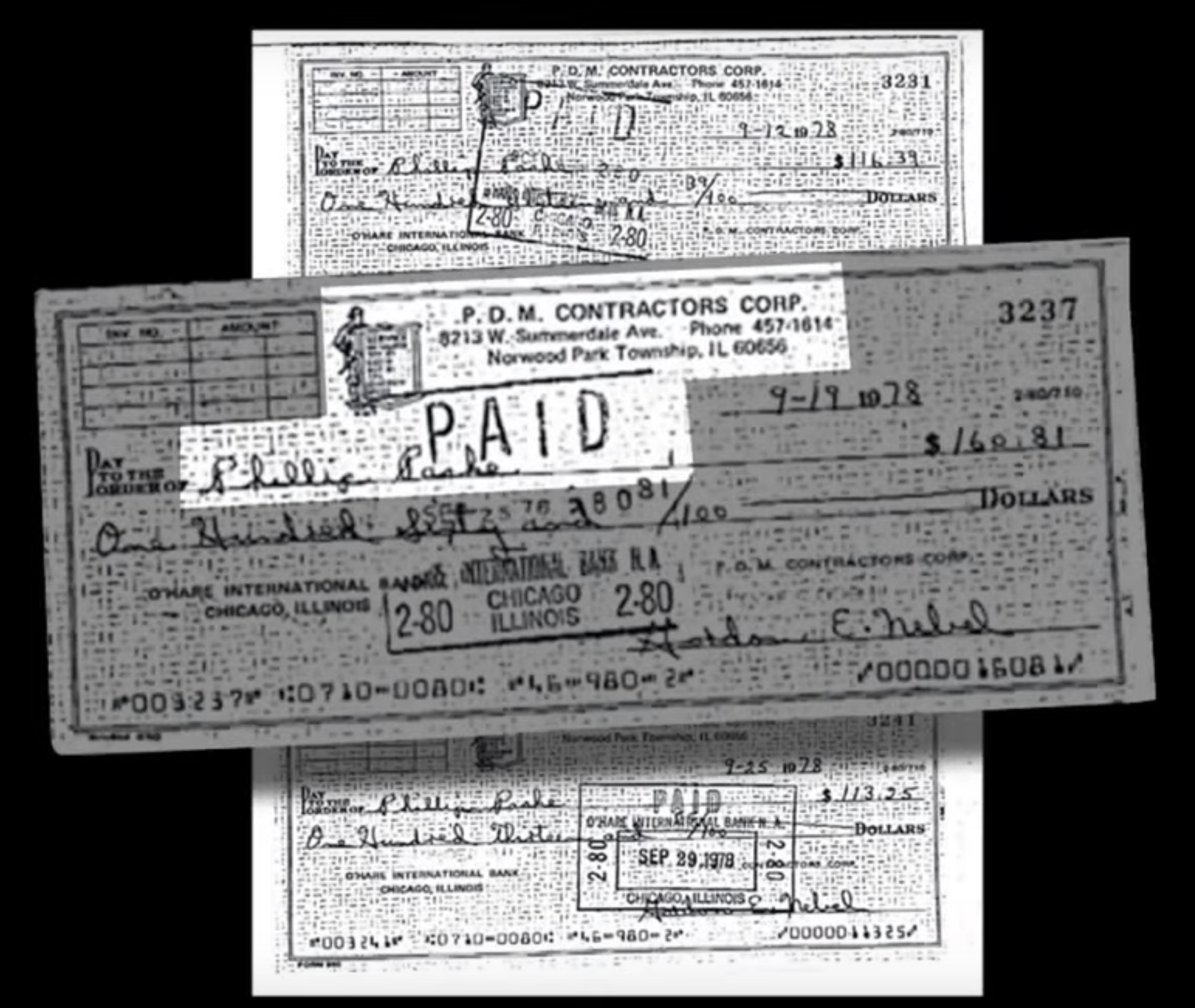Note: John Wayne Gacy is neither innocent or credible. This doesn’t mean he was guilty of every murder he was convicted of, nor does it mean everything he said was a lie. If this is true then the following be read with an open mind. The claims made by Gacy are presented as evidence only so far as they are supported by the totality of evidence presented throughout this piece. To simplify his case into binary thought, that is, to say Gacy was either innocent or guilty, is to make a mess of reality by cleaning up, what in reality was a messy situation.
When we last left John Norman in part 3 of this series he’d been arrested in Homewood, Illinois in November 1973 and was awaiting trial in Cook County Jail. There he met another inmate named Phillip Paske, who helped him operate the continuation of his sex trafficking ring under the new new front organisation, The Delta Project. Paske was paroled sometime in 1976. In January 1977 Kenneth Hellstrom, a victim of Norman’s who had just testified at his trial, was stabbed to death on his way home from work in a seemingly motiveless attack.1
A few months after this in May a judge ordered Norman’s release for time served of a four year sentence,2 and he moved into a basement apartment at 6851/2 W. Wrightwood Av in Chicago, just a twenty minute drive from where soon, the bodies of twenty-nine teenaged boys would be exhumed from beneath the home of infamous serial killer John Wayne Gacy.
The apartment Norman moved into was raided by police in June 1978 after a teenaged boy named Michael Salcido reported Norman to police for sexual assault and using him to in pornography. The apartment had been setup as a child pornography studio, where police found, now for the third time, thousands of index cards detailing Norman’s extensive network of clientele, now ‘sponsoring’ boys through a front organisation called The Creative Corps.3a 3b Phillip Paske had been living with Norman and was at the apartment at the time of the raid. He was taken into custody but released without charge soon after.4
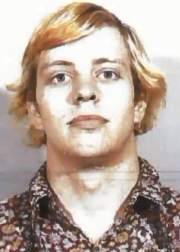
Phillip Paske
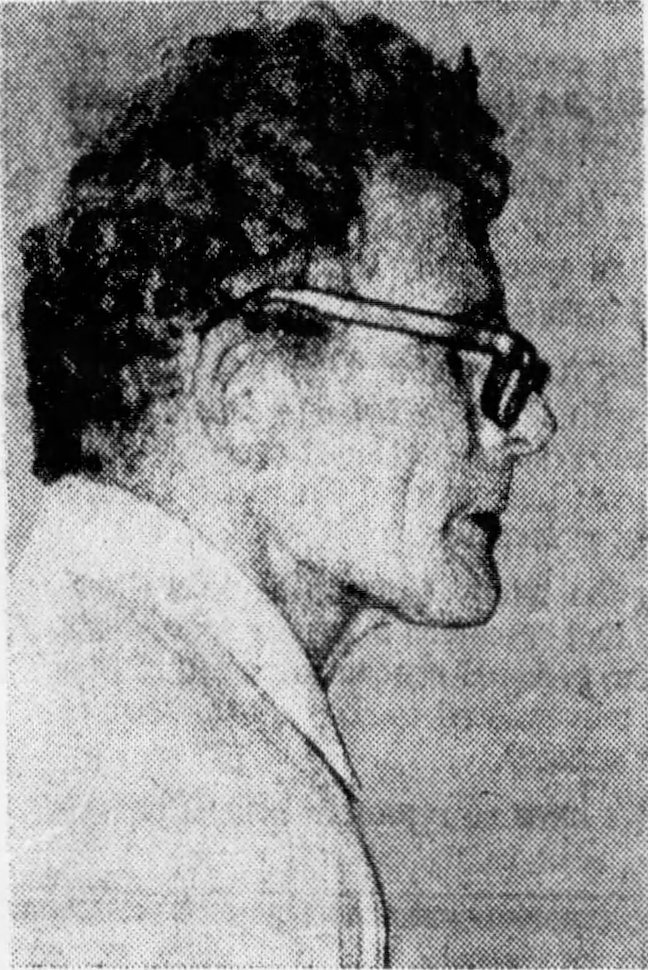
John Norman
Then in February 1979, two months before he was due to testify at Norman’s trial, Michael Salcido was found with his throat slit in a car.5 Making him the second victim of John Norman to meet this fate shortly before or after testifying against him. The coincidence of this wasn’t lost on murder police at the time, who regarded Phillip Paske as a person of interest. Nothing ever came of this and both murders would eventually be attributed to others. However, then rather bizarrely in the early 1990s investigators interviewed John Wayne Gacy regarding a possible John Norman connection to these murders.6
This was because having been identified as an associate of John Norman's, Phillip Paske had lost his job as a children’s supervisor at a public swimming pool,7 and after Norman was sent back to Prison in June 1978 records show Paske had gone on to work for John Gacy’s construction company, Painting Decorating Maintenance, or PDM.
Three payslips made out to Phillip Paske from the company dated 12/9/1978, 19/9/1978, and 25/9/9178, show he had been an employee of Gacy’s and frequented his house in the months prior to the discovery there of the largest mass grave of murdered boys since the excavation of Dean Corll’s boat shed in 1973.8 What led to the discovery of this mass grave had been the disappearance of a 15-year-old Maine West High school student named Robert Piest on December 11th 1978.
Robert had disappeared from the pharmacy where he held a part time job and where Gacy’s company had completed a number of remodelling jobs. He had been present at the pharmacy when his mother had arrived to pick him up after his evening shift, but he had then left the store soon after and never returned. The pharmacy’s owner, Phil Torf, told Piest’s mother Robert had gone to speak to someone about a job. When Robert hadn’t returned home later that night his mother reported him missing, and his case found its way into the hands of a police captain named Joseph Kozenzcak, whose son just so happened to be a classmate of Robert’s at Maine West High school.9

Cpt. Joseph Kozenczak
Based on this information John Gacy’s criminal record was pulled, which listed a number of sexual assaults including one of a boy around Robert’s age. This was used by Cpt. Kozenczak to obtain a search warrant for Gacy’s home at 8213 West Summerdale Avenue in Norwood Park, which was executed upon on December 13th.12

John Wayne Gacy mugshot
Items found in the search of Gacy’s home, which had also served as the home office for his business, included pederasty pornography and literature,13 chemist drugs, a hypodermic syringe,14 a 2x4 wooden plank fitted with two wrist-sized loops of rope,15 handcuffs, two driver’s licences, and a Maine West High School graduation ring inscribed with the initials J.A.S.16

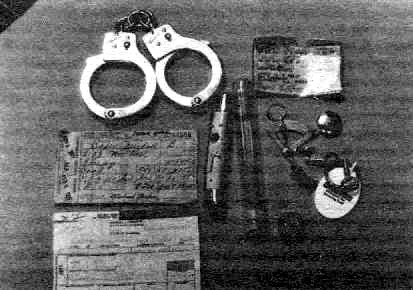
The ring belonged to John Szyc, who had graduated from Maine West High in 1975 and gone on to work for Gacy’s company shortly before he was reported missing in January 1977. A few months after his disappearance John Szyc’s car was found being driven by a teenager named Michael Rossi, an employee of Gacy’s who had been living with Gacy on and off, along with another teenaged employee named David Cram.17 Gacy and these two teenagers were placed under police surveillance from December 13th.
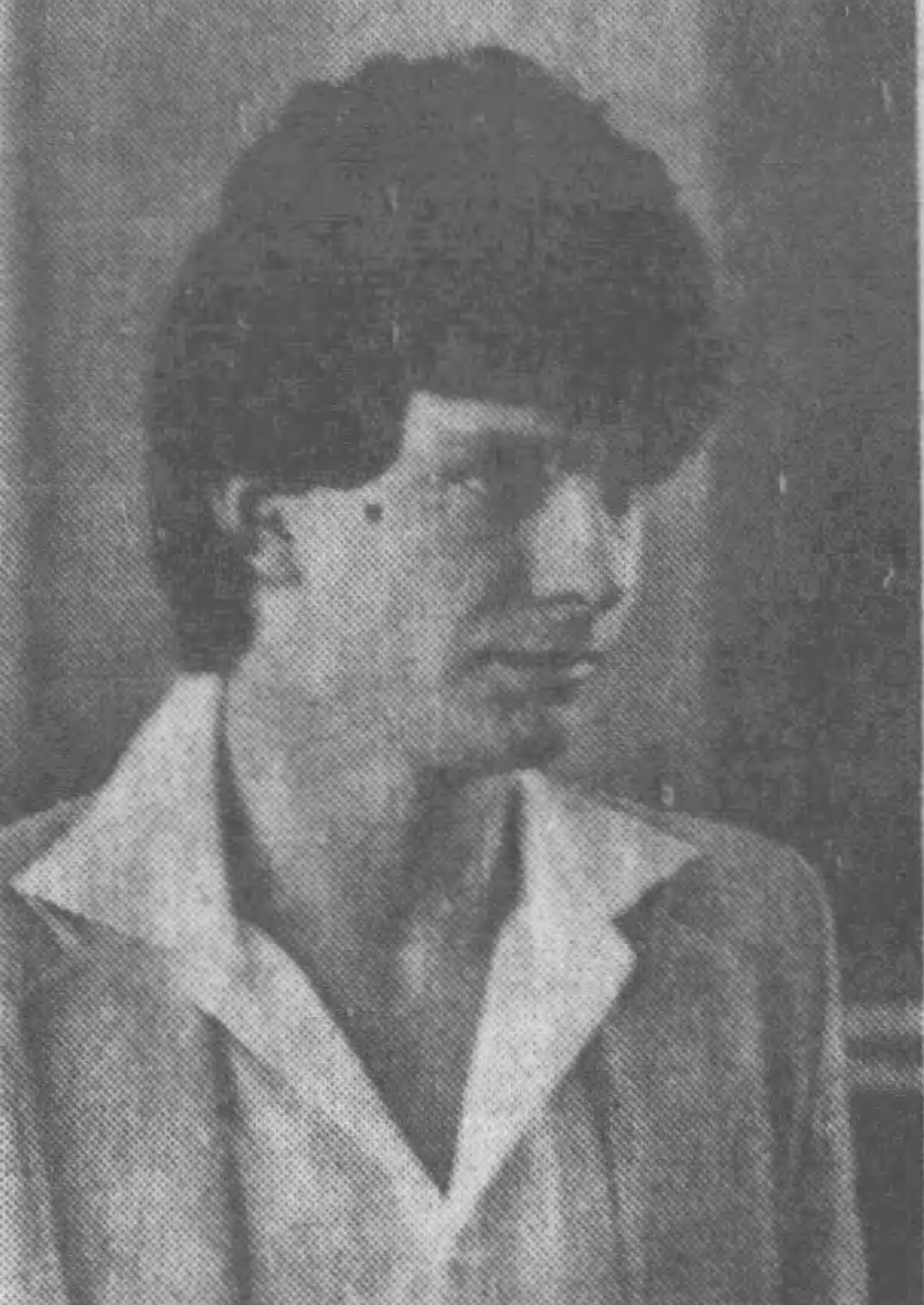
David Cram

Michael Rossi
On December 16th police interviewed the second of these teenagers, David Cram. Cram called Gacy a braggard who claimed to be part of some crime syndicate,18 and mentioned he had found driver’s licenses belonging to dead people in Gacy’s garage.19 He also told police that after they had finished searching his house the 13th, Gacy had gone down into the crawlspace with a flashlight.20
The other other teenager Michael Rossi was then interviewed the following day on December 17th. When asked about having been in possession of John Szyc’s car, whose ring had been found in Gacy’s home, he told police Gacy had given it to him.21 Rossi also repeated what David Cram had said about finding dead people’s driver licenses in Gacy’s garage.22
That same day on December 17th a third missing youth was added to the list of prospective victims. Cpt. Kozenczak reported he had spoken with Gacy’s ex-wife, Carole Hoff, and she had given him the name of a former employee of Gacy’s named John Butkovich, another teenager who had been missing since 1975.23 John Butkovich’s father stated he had told police at the time his son had gotten into a pay dispute with Gacy shortly before he had disappeared. Police said the father had only given them this information two weeks after his son had been reported missing.24 Adding to the confusion were reports in December 1978 which claimed investigators had found an identification card for John Butkovich in Gacy’s home,25 however the only driver licences ever booked into evidence were for a Michael B. Baker & James O’Toole.26
So by December 17th, a week into the investigation, John Gacy had been suspected of murdering three missing youths: Robert Piest, John Szyc, and John Butkovich. Robert Piest and John Szyc had both attended the same school, Maine West High, also attended by the son of the police captain in charge of their cases.
On December 21st Cpt. Kozenczak obtained a second search warrant for Gacy’s home based on the following two pieces of evidence.
First was the claim that a photo processing receipt in Robert Piest’s pocket at the time he went missing, had been found inside Gacy’s kitchen bin during the December 13th search. The term ‘claim’ is used because this receipt wasn’t logged into evidence, according to both the case files and a statement made by the evidence technician, Karl Humberg, who had been present at the search and in charge of the inventory of items taken from Gacy’s home. Other detectives present at the search would later state that the receipt hadn’t actually been found on Gacy’s property at all, but on the curb out front of it.27 None the less, Joseph Kozenczak wrote the following about finding the photo receipt in his book about the investigation:
'' ‘Wait one minute,’ I suddenly said, and, jumping up, bolted down the hall to the polygraph room. There, in a clear plastic bag, shining like a piece of gold, was the bright red receipt I had plucked out of John Gacy’s garbage bag. . . . This was the first and only piece of evidence we had showing that the Piest’s boy had even been in the house on Summerdale. I felt as if I had just dropped a noose around the burly contractor’s neck. ''
The second piece of evidence came from a Detective named Robert Schultz who was part of the surveillance team monitoring Gacy. Schultz claimed Gacy had invited him inside of his home on December 19th, and while using the bathroom he had smelt an odour of dead bodies. In the warrant request Cpt. Kozenczak has it recorded that Schultz relayed this information to him on December 21st, which infers Schultz had either kept this information to himself for two days or had come up with it on the 21st.28
Based off these two pieces of evidence, this second search warrant was obtained and executed upon on December 21st. When police arrived they found the crawlspace of Gacy’s home flooded with water on account of a pump being disconnected. After the pump was turned back on and the water drained, the first human remains were discovered basically unearthed, in what would over the coming weeks and months, lead to the discovery of twenty-nine bodies.

While this was happening Gacy had been arrested at gas station and taken to hospital after reportedly suffering from chest pains. David Cram, Michael Rossi, and a friend of Gacy’s named Ronald Rhode, would all tell police that Gacy had admitted to them, each individually before his arrest that day, he had committed around thirty murders.29
When Gacy was transferred to the police station later that evening for interrogation, the first thing he is reported to have said was he had up to four different personalities, and that he didn’t know them all. He had then asked “Who else do we have in the police station. There are others involved”, naming David Cram and Michael Rossi as accomplices.30
That night Gacy gave a somewhat confused confession to the murders of Robert Piest, John Butkovich, and John Syzc,31 at times speaking in third person, while at others referencing an alternate identity named Jack.32 Gacy would later deny having given this confession. He drew a map of the crawlspace where he said the bodies of others who had been tortured and killed could be found,33 and mentioned that the 2x4 wooden plank fixed with ropes found in his home on the 13th had been used as a torture board, an idea he had gotten from Elmer Wayne Henley, the teenaged accomplice of Dean Corll in Houston five years earlier.34
Referring to one of his own alleged accomplices, Gacy said David Cram had been a pimp of boy prostitutes whose step-father named Donald E. Weber had been a murderer,35 and that Cram and Michael Rossi had dug the graves in the crawlspace where the bodies had been found.36 Both Rossi and Cram admitted to digging trenches in the crawlspace at Gacy’s trial, though denied having known for what purpose.37 Rather, both stated Gacy claimed to be part of some syndicate that killed youths and set people up.38
Gacy’s claim he had accomplices was corroborated by one of his own victims, Jeff Rignall, who oddly enough hadn’t been killed. In March 1978 Rignall reported to police he had been drugged, raped and tortured by Gacy, and that at least one other person had been present at Gacy’s home when this had taken place.39 In 1979 it had been reported that investigators had been looking at three other suspects as possible accomplices. Of these Rossi and Cram were identified, the third was not. 40
In March 1980 Gacy was convicted of thirty-three murders and sentenced to death. No charges were laid against Michael Rossi or David Cram and the investigation into possible accomplices ceased. Gacy was sent to death row, where he would spend the next decade postponing the date of his execution through the process of appeals. Terry Sullivan, the state’s attorney who prosecuted Gacy, got a book deal, Killer Clown, released in 1983. And the authoritative account of John Wayne Gacy was published into the annals of "True Crime" as a serial killer who acted alone.
Then in the early 1990s, with his date of execution looming after having exhausted his appeals all the way up to the supreme court, Gacy went public with new information on the involvement of others as accomplices, in what seemed like a last-ditch attempt to have his case reexamined.
In series of 1992 media interviews, Gacy claimed in 1978 and 1979 police had investigated four others as possible accomplices. Once again he named David Cram and Michael Rossi, but now he gave a third name, Phillip Paske, and by extension a fourth, John David Norman. He said that as employees of his company; Cram, Rossi, and Paske all had keys to his home office at 8213 West Summerdale Avenue, and had used it during periods he’d been out of town.41 Evidence in the form of travel documentation and financial statements appear to show Gacy had in fact been out of state at times when some of the victims buried in this home had disappeared.42
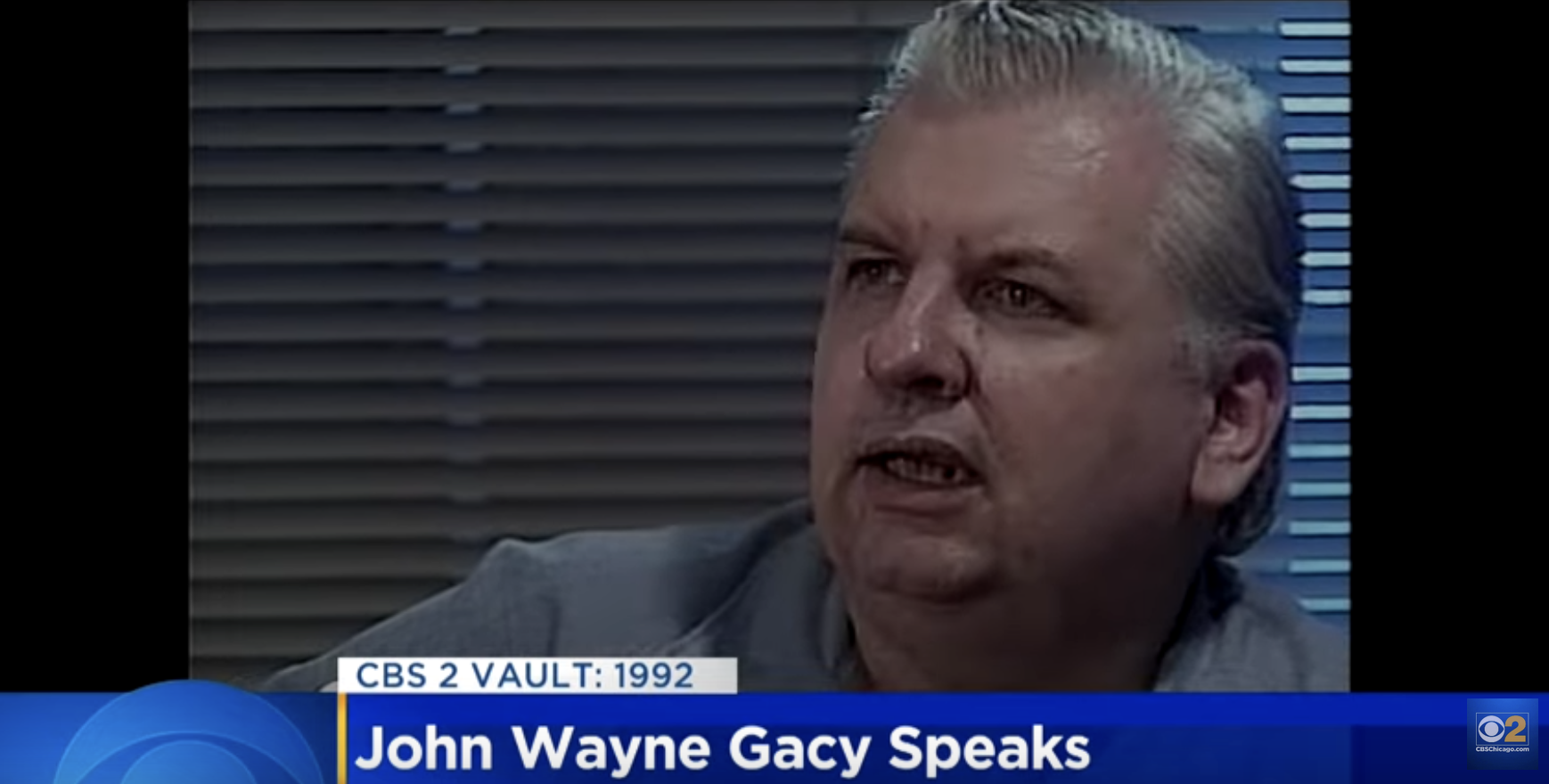
Gacy said he’d been introduced to Phillip Paske by David Cram as someone who could procure boys for sex,43 and in a letter described Paske as “dangerous” and a pimp of girls and boys for sex and movies.44
Gacy’s claim he had met Paske through Cram would make sense, as Gacy had also described Cram as a pimp who supplied him with boys in his 1978 police interview.
In a telephone conversation Gacy had with a collectables store owner named Andy Matesi from death row, he stated the detectives who investigated his case had known about the John Norman connection and covered it up, and went on to specifically name Joseph Kozenczak.45 In the months before his execution in May 1994, another recorded conversation echoing similar claims between Gacy was being played to the public on a 1800-number messaging service.46
When you list the parallels between the Gacy murders and those of Dean Corll’s in Houston five years earlier, the two cases are almost identical, right down to the technique of a handcuff trick to incapacitate victims and use of a 2x4 as a torture board.
Dean Corll had a total of twenty eight victims, all male youths between the ages of thirteen and twenty.
John Gacy had a total of thirty three victims attributed to him, all male youths between the ages of fourteen and twenty-one.
Dean Corll buried seventeen of these victims in a mass grave beneath his boatshed.
John Gacy buried twenty-nine of these victims in a mass grave beneath his house.
The investigation into the Dean Corll murders uncovered links to John Norman’s boy sex trafficking ring.
The investigation into the John Gacy murders uncovered links to John Norman’s boy sex trafficking ring.
Eleven of Dean Corll’s victims had been identified in child pornography produced by Roy Ames. And in 1977 an LAPD vice cop named Lloyd Martin reported that one of Dean Corll’s victims had been featured in a snuff film screened at a party in Los Angeles.47

'The last porno Show', Robert Sam Anson, New Times, June 24, 1977. Article included as part of senate hearing.

'Senate Hearing protection into protection of children against sexual exploitation 46772 - 1977, page 129(native)
Moreover, in a letter that was written to Roy Ames by one of his pedophile customers, the customer writes of their desire to see a “a stiff 14-year old." in one of his films. 48
'' In the letters seized during both searches, officials found correspondence from R.D. Smith, 16704 - 72nd Avenue Northeast, Bothell, WA 98011. In numerous letters that were seized, Smith described his receipt of various items of hard-core child pornography, including depictions of young boys engaging in sexual intercourse with older boys, and scenes of children in sexual bondage. In one letter, Smith wrote that he had been buying this explicit material for about five years. In another letter, Smith commented that a particular child pornography film would have been better if the manufacturers had "tossed in a stiff 14-year old. ''
From this follows the reasonable deduction Dean Corll and Roy Ames had been producing snuff films. A theory covered in greater depth in the second article of this series: Dean Corll and The Odyssey Network.
When Gacy had named Phillip Paski and John Norman as accomplices, it wasn’t entirely clear in what capacity he meant, as he was evasive and also stated he was unsure if he had ever met John Norman. The only thing he did say was that the two had been making snuff films.49 And Gacy’s death row attorney, Karen Conti, stated Gacy had eluded to a snuff film operation privately as well.50
To this point, it is interesting to note the following items had been found in Gacy’s home, but which were never entered into evidence during the original investigation: film cameras, photo cameras, an 8mm editing deck and viewing screen. Along with what are listed as blackmail files on local politicians.51


That Gacy had blackmail on local politicians isn't out of the realm of possibility. As a precinct captain for the Democrat party in Chicago he was a politically connected man. Here's a photo of him shaking hands with Michael Bilandic, the Mayor of Chicago in 1978.
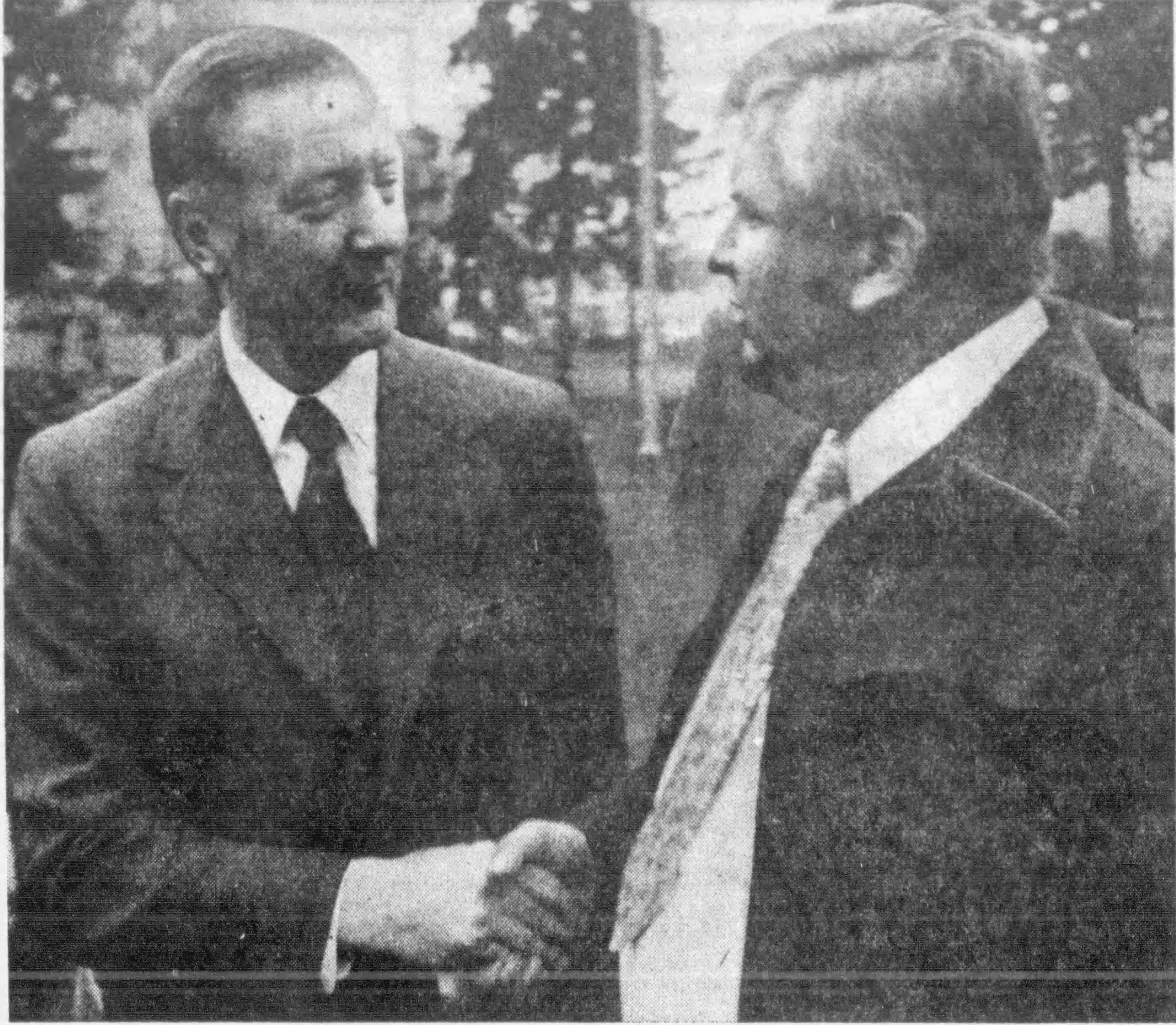
And here's Gacy shaking hands with the President's wife, Rosalynn Carter.

See that little pin on his label? That's a Secret Service special clearance badge. Which would've meant a background check was done on Gacy before this event. The puzzling thing is this photo was taken on May 6 1978, seven months prior to Gacy's arrest. Which meant he somehow passed a background check with the same criminal record that would redflag him as a murder suspect later in December.
The photographer Gacy often hired for these sort of events, Marty Zielinski, told newspapers after Gacy’s arrest he’d been asked by Gacy to film illegal pornography. Since Gacy had both the equiptment and desire to produce pornography, it's reasonable to assume that he did.52
Perhaps the connection between John Gacy and John Norman by way of Phillip Paske is pure coincidence. Along with the fact both seem to have been producing child pornography in Chicago at the same time. And when Gacy had learnt Paske worked for John Norman, he’d simply seized upon the opportunity to cast his case in new light. Though his claim Norman and Paske had been making snuff films is rather odd, considering that is exactly what Dean Corll had been doing in a case similar to his own, also linked to Norman. And when Norman’s apartment had been raided in connection to the Dean Corll murders, four photographs of boys were discovered with the word “kill” written on them.53
When looking at a timeline of victim disappearances in the Gacy murders there is a correlation between an uptick in victim disappearances and periods in which John Norman is either out on parol or bail in Chicago.
The official list of victims attributed to Gacy is thirty-three, of which twenty-eight have been identified—officially. These twenty-eight all disappeared within the seven year period spanning January 1972 and December 1978.
During those seven years, only two victims went missing in the first four and half year between January 1972 and April 1976. Timothy McCoy in January 1972 and John Butkovich in July 1975. John Norman was not in Illinois in 1972 and had been inside an Illinois jail from November 1973 until 1976. Then sometime in 1976 an anonymous benefactor from California posted Norman’s $35,000 bail bond and he was released.54 The exact month of his release is unclear, but during the nine month period between April and December in 1976 a further twelve victims disappear.
In December 1976 Norman was convicted of the charges from 1973 and was sentenced to four years prison, the next five months of which he would serve until a judge ordered his release in May 1977 for time served.55 During this period two more victims go missing, one of which was John Szyc.
After his release in May, Norman moved into an apartment at 6851/2 West Wrightwood, located smack bang in the middle of a boy prostitution district of Chicago, until he was arrested once more in June 1978. During those twelve months he’d been released, a further eight victims went missing which would be the last of those discovered in Gacy’s crawlspace. The final four to go missing after Norman is back in prison were dumped in the Des Plaines River.
Over the seven year period of victim disappearances, Norman was either not in Chicago or imprisoned for five, and either out on parole or bail in Chicago for two. Up to twenty of the victims, depending on the month of his release in 1976, disappeared during the two years we was out on parole or bail. Eight disappeared during the five he was out of state or imprisoned. That’s twice the amount of disappearances in less than half the amount of time.
This does not infer causation, only lends itself to a totality of circumstantial evidence furthering the theory John Norman or Phillip Paske were possibly involved in some of the murders.
| 1972-1976 | Timothy McCoy, 18, January 3, 1972 John Butkovitch, 17, July 21, 1975 |
| John Norman released from Jail - 1976 Month Unknown | |
| 1976 April - December | Darrell Sampson, 18, April 6, 1976 Randall Reffett, 15, May 14, 1976 Sam Stapleton, 14, May 14, 1976 Michael Bonnin, 17, June 3, 1976 William Carroll, 16, June 13, 1976 James Byron Haakenson, 16, August 1976 Rick Johnston, 17, August 6, 1976 Kenneth Parker, 16, October 25, 1976 Michael Marino, 14, October 25, 1976 William George Bundy, 19, 26 October 1976 Francis Wayne Alexander, 21, 1 December 1976 Gregory Godzik, 17, December 12, 1976 |
| John Norman sent to Prison - 1976 December | |
| 1977 January-May | John Szyc, 19, January 20, 1977 Jon Prestidge, 20, March 15, 1977 |
| John Norman released from Prison - 1977 May | |
| 1977 May - 1978 June | Matthew Bowman, 19, July 5, 1977 Robert Gilroy, 18, September 15, 1977 John Mowery, 19, September 25, 1977 Russell Nelson, 21, October 17, 1977 Robert Winch, 16, November 10, 1977 Tommy Boling, 20, November 18, 1977 David Talsma, 19, December 9, 1977 William Kindred, 19, February 16, 1978 |
| John Norman Norman arrested 1978 June 16th | |
| 1978 June - December | Timothy O'Rourke, 20, June 1978 Frank Landingin, 19, November 4, 1978 James Mazzara, 21, November 24, 1978 Robert Piest, 15, December 11, 1978 |
Three of the eight to disappear while Norman was imprisoned were those Gacy had first been suspected of: Robert Peist, John Butkovich, and John Szyc. Gacy gave further information on these specific murders during his media interviews.
He said the John Butkovich murder was not one of the five murders he knew about, or one that he killed.56 That Robert Piest had been killed by another individual in his home, after being transported there by another. Gacy did take responsibility for dumping Piest's body in the Des Plaines river after the murder however.57
And he said John Szyc had been at his house with Michael Rossi the night he’d been killed, and that he'd walked past Szyc’s dead body in the living room were Rossi was sleeping sometime that evening.58 Michael Rossi had of course been found in possession of John Szyc’s car a few months after his disappearance.
Another of Gacy’s victims named John Mowery had moved into an apartment with Michael Rossi just days before his disappearance.59 Two female friends of Mowery’s went to the apartment and spoke to Rossi about this at the time.60 According to them, Rossi told them Mowery had gone away for a few days but had then strangely asked if they would take his dog. Even more strange is these two also apparently claimed that Rossi had mentioned a place where dead bodies had been buried during that conversation.61
There is though, another connection between these three victims and one of John Norman’s, Michael Salcido. The boy responsible for reporting Norman to police in July 1978, who was then murdered in February 1979 before he could testify at Norman’s trial. Michael Salcido had been a ward of the state removed from his family by the Illinois department of children and family services and into the custody of The Maryville Academy, a large campus-like Catholic group home for delinquent youths in Chicago run by Father John Smyth. The academy had a high school placement program during the 1970s which would send boys in its custody to affiliated catholic high schools in the area. And Salcido had been been put in this program.62
There were only four high schools involved in this program - Sacred Heart, Notre Dame, Maine East(Hillary Clinton’s high school63), and Maine West High school.64a 64b And of these four, Maine West High appeared to be the most involved with wards of the Maryville Academy.65
Maine West High was the high school attended by Robert Piest and John Syzc, the first two victims Gacy had been suspected of killing based on evidence found in his house during the December 13th search by Joseph Kozenczak and his team. There was the photo processing receipt belonging to Robert Piest which Kozenczak claimed to have found in Gacy’s kitchen bin. And John Szyc’s Maine West graduation ring.
Maine West was also the high school attended by Joseph Kozenczak’s son, who had been the same age as Robert Piest. After Robert Piest had been confirmed as a victim of Gacy’s, his father Harold Piest started a charity in his name, the proceeds of which were all donated to the Maryville academy.66a 66b
Marko Butkovich, the father of John Butkovich, had been employed as a Church janitor at one time by an assistant director of the Maryville academy named Rev. John Tilford, a former next-door neighbour of the Butkovich family who had personally known John Butkovich and presided over his funeral.67 John Butkovich hadn’t attended Maine West like Piest or Szyc, but it had been reported in 1979 he’d been friends with John Szyc and another one of the victim’s named Gregory Godzik.68
In 1986 a priest at the Maryville Academy named Robert Friese was charged for the sexual assault of a boy at the academy,69 in an incident originating from a complaint made to the academy’s leadership in 1980, which claimed Robert Friese had been providing a group of boys there with drugs and alcohol, and had anal sex with one of them. The matter had been handled internally at the time by Maryville’s director, Rev. John Smyth, who transferred Robert Friese to another position within the academy in 1982. John Tilford had been assistant director of Maryville at this time.70
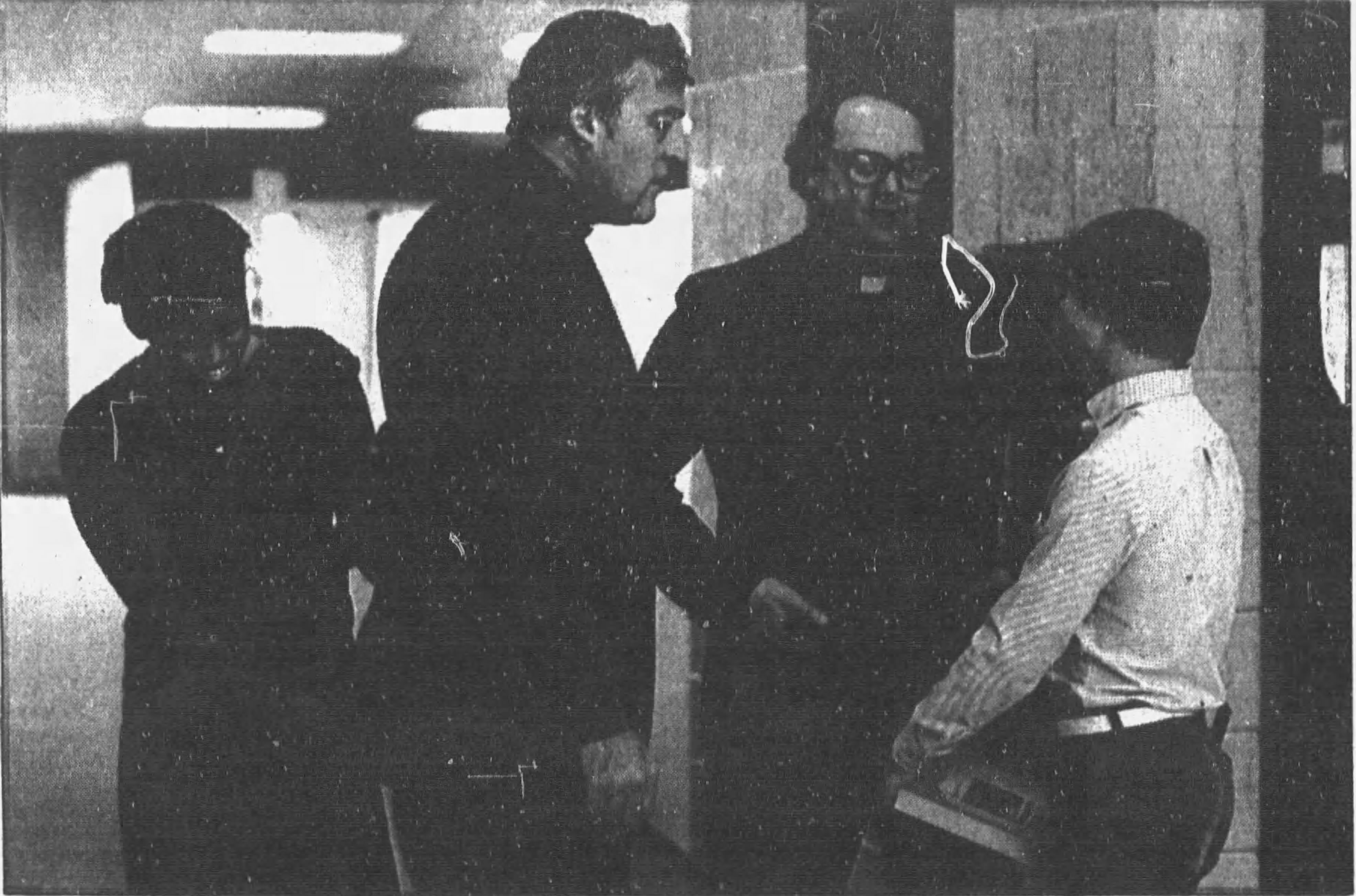
Then in 1987 similar accusations were made against a second Reverend at the academy. A Chicago Tribune reporter received an anonymous phone call from a 15-year-old boy, who claimed a Rev. Robert Mayer at the Maryville Academy had hosted parties for boys there where they were supplied with alcohol, shown porn films, and engaged in oral sex. The Des Plaine chief of police had contacted Rev. John Smyth about the allegation, and it appears things were was handled internally and never became a police matter.71 The interesting thing about this is that the police chief who contacted Rev. John Smyth had been none other than Joseph Kozenczak, who had since been promoted after making his career with the investigation into John Gacy. And it would appear Kozenczak had known Maryville academy director John Smyth will. His wife, Karen Kozenczak, described Reverend Smyth as a close friend in a 2010, and Joseph Kozenczak’s funeral would be held at the Maryville Academy after his death in 2015.72

Karen Kozenczak, Rev. John Smyth, and Chicago Mayor Martin Moylan 73
The photo above was taken in 2010, years after The Maryville Academy was shutdown in 2003,74 after the governor of Illinois stated it was 'unsafe' for children,75 following two allegations of sexual assault and one suicide at the academy the previous year. As a result Rev. John Smyth resigned from his position as director and was replaced by his longtime assistant director Rev. David Ryan.76
John Smyth was personally accused of sexual abuse by former students of the Maryville Academy in 2019.77 These were then followed by further accusations made against his replacement Rev. David Ryan in 2020.78
Perhaps there’s something to this. I don’t know. John Gacy was raised Catholic and was involved with Catholic organisations as an adult, such as the Catholic Inter-Club Council. But all of this is circumstantial evidence. One of the bizarre ‘coincidences’ which emerge upon closer inspection of his case. Like Robin Gecht, another one of Gacy’s one-time employees who went on to become the leader of torture murder ring in Chicago during the 1980s.79
There can be little doubt David Cram and Michael Rossi had been aware of the murders prior to the police investigation in December 1978. The drastic uptick in victim disappearances from 1976 onwards, the year Gacy divorced from his wife and these two started living with him on and off, infers they most likely participated as well. Even if Gacy didn’t know John Norman, he did know Phillip Paske, and appears credible when in his claim that he met Paske through David Cram. As he had described Cram as a pimp who supplied him with boys for sex to police back in 1978. Which is exactly what Phillip Paske had been doing at that time as well working for John Norman, and as it turned out, Gacy as well. And if Cram knew Paske and was also pimping boys, it’s likely David Cram knew John Norman as well even if Gacy didn’t. So it is not beyond reason to suggest Gacy’s home became a dumping ground for victims of the boy prostitution and pornography scene in Chicago during the 1970s. The discovery of 8mm cameras and film editing equipment in Gacy’s home suggests he was involved in the production of child pornography, which is rarely if ever a solitary activity. And given what Gacy is known to have been into sexually, that is— death, that he’d been involved in the production of snuff films is not a stretch of the imagination. His accusation that this is what Phillip Paske and John Norman had been doing, also makes this possibility all the more disconcerting. As well-versed liars like Gacy, who think on their feet confidently and fast, are often making up half-truths as opposed to outright fabrications, so parts of their stories always add up.
From all this comes a theory. And it is just a theory nothing more. That perhaps John Gacy, David Cram, and Michael Rossi had been producing snuff films at Gacy’s home and selling to others through John Norman’s network. This could explain why there is an uptick in victim disappearances after Gacy became associated with David Cram and Michael Rossi in 1976, during periods when John Norman was out of prison or jail in Chicago and able to take possession of such items. It is known John Norman was involved with Hermes, an underground sadomasochist child pornography magazine, whose publishers were also based in Chicago at that time. While the suspected financial backer of Hermes had been Francis Shelden, who’d been suspected of financing snuff films in Michigan during that period, which had come up in the Oakland County Child Murders investigation years later. Which was covered in the previous article, North Fox Island and the Oakland County Child Killings.
A possible reason for the victims in these cases all being boys in their early to late teens, is these post-puberty years are when boys start to become less desirable on the child prostitution market and are forced into more extreme stuff to keep generating profits for their pimps or traffickers. This had been the observation of Dr. Tom Philpot, who'd been researching institutional boy sex trafficking in the United States at the time, and spole of his findings on two episodes of a cable tv program Alternative Views, that aired in 1981.80
The Maryville Academy is interesting given its history of sexual abuse, its custody of a murdered victim of John Norman, its placement of boys in its custody into a school of two of the murdered victims of John Gacy, its association with two fathers of those murdered victims and the lead investigator of the Gacy case, who was the father of another boy from that same school, Joseph Kozenczak, who then helped the academy cover up allegations of sexual abuse in 1987, and had been responsible for coming up with some rather dubious evidence against Gacy, regardless of the fact Gacy had obviously been involved in some of the murders. Which Gacy himself had admitted to, only claiming others had been involved too. For which there was substantial evidence for, that was ignored by Kozenczak in his initial investigation.
A connection to a similar institute for delinquent youths would also be linked to many of the victims of the infamous child murders in Atlanta, who were just starting to disappear in 1979. An investigator working that case named Chet Dettlinger would draw parallels between those murders and John Wayne Gacy's aswell. In his book The List, published in 1984, he wrote:
“This fit into my theory(one of the few theories I allowed myself while preferring to deal with facts) that Atlanta, like Chicago, had a John Wayne Gacy-like situation, with four-levels:
1. Young victims
2. Older procurer/victims/killers
3. Still older user/victims/killers
4. The kingpin killer(s)”
Chet Dettlinger's book The List will serve as the primary source of information on the next part in this series. The Atlanta Child Murders and The Challenge School for Boys. Bringing an end to the series of cases connected to John Norman, and leaving the network diagram of associations to his trafficking operation as this:

